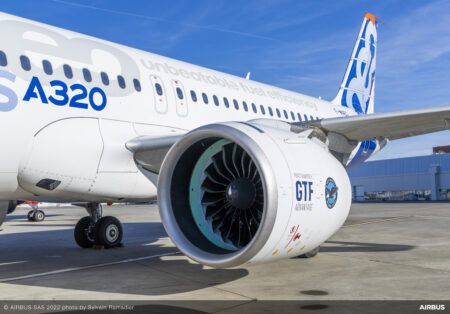The second phase of GE9X CMC (ceramic matrix composite) component testing in a GEnx demonstrator engine has been completed, with the CMCs continuing to be the clear winner against conventional materials.
The demonstrator engine accumulated 1,800 cycles in the latest round of tests, which included exposure to harsh environmental conditions of dust and debris. The level of debris exposure was equivalent to approximately 3,000 take-off and landing operation cycles. The GE9X engine will power Boeing’s 777X aircraft.
According to Ted Ingling, GE9X general manager at GE Aviation, “Dust and debris accumulate on the external surface of the airfoils and can degrade the insulation coatings. They can also collect on internal cooling circuits of the blades and nozzles and degrade the cooling effectiveness. Both factors can lead to durability issues. These demonstrator tests allow us to get an accelerated understanding of how our new designs and materials perform in all environments, including those prone to high airborne debris.”
For the second round of tests, the GEnx demonstrator engine utilized the same CMC combustor liners, HPT stage 1 shrouds and HPT stage 2 nozzles from the first round of tests in September 2015, along with the addition of the HPT stage 1 CMC nozzles.
“The majority of the CMC components experienced a total of nearly 4,600 cycles in the two testing phases in the GEnx demonstrator engine,” said Ingling. “All of the CMC components performed extremely well and continue to prove their value.”
The use of lightweight, heat-resistant CMCs in the hot section of jet engines is a significant breakthrough in the aviation industry. CMCs consist of silicon carbide ceramic fibers and ceramic matrix, and are enhanced with proprietary coatings. With one-third the density of metal alloys, these ultra-lightweight CMCs reduce an engine’s weight, which improves fuel efficiency and durability. CMCs are also more heat resistant than metal alloys, allowing the diversion of less cooling air into an engine’s hot section. By using this cooling air in the engine flow path, an engine runs more efficiently at higher temperatures.
The GEnx CMC demonstrator engine also incorporated non-CMC GE9X parts, including the new 3D additive manufactured lightweight low-pressure turbine titanium aluminide (TiAl) blades produced at Avio Aero, and the next-generation HPT stage 1 blades with advance cooling technology. These blades use a proprietary process invented at GRC and industrialized at GE Aviation’s Cores & Castings facility in Dayton, Ohio. This novel process employs the most efficient cooling circuits ever produced, which results in significant fuel efficiency improvement over historical designs.
Engine certification is expected in 2018.
January 25, 2017




